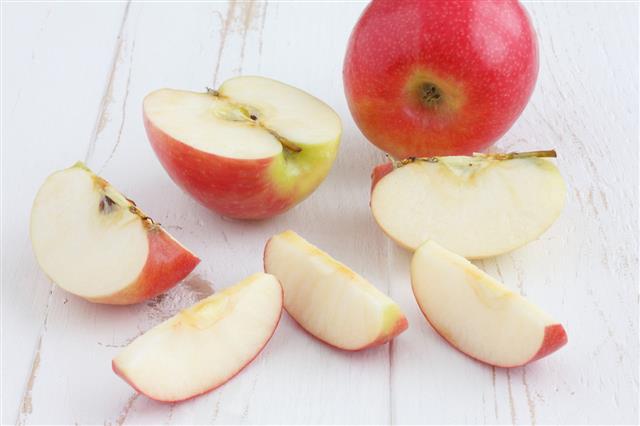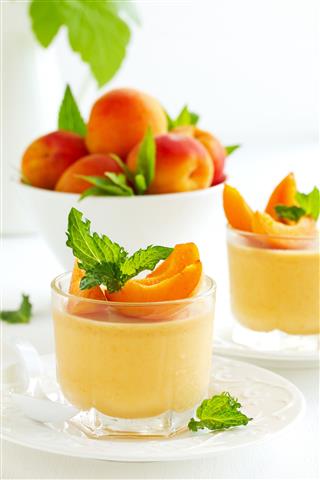
When incorporated in our daily dietary intake, some fruits and vegetables can help lower high blood pressure. Wondering which are they? Have a look!
High Blood Pressure
High blood pressure is a cause for concern, as it can lead to heart diseases, strokes, kidney failure, and cognitive decline. A blood pressure level of 120/80 mm of Hg is considered as normal. If one is suffering from high blood pressure, then it is imperative to work with your health care provider, to understand the ways it can be controlled or lowered.
Most medical practitioners advice a combination of medications and lifestyle changes, in order to successfully combat high blood pressure.
Lifestyle changes include modification in diet and a proper exercise regimen. It has been scientifically proven that a diet that includes lots of fruits and vegetables, can help in lowering blood pressure naturally.
Fruits that Lower Blood Pressure
Fruits have many essential nutrients, vitamins, minerals and antioxidants. A daily serving of four to five different fruits is recommended by the World Health Organisation and Food and Agriculture of the United Nation, in order to stay healthy.
Interestingly, you can either opt for raw fruits or choose to drink a healthy glass of delicious fruit juice! Here’s a list of fruits that not only taste great, but also help you combat high blood pressure. Have a look…
Apples

Apples are rich in antioxidants such as vitamin C and flavonoids, which prevent the damage of blood vessels. These fruits are also rich in potassium and phosphorous, and low in sodium content. This helps maintain the electrolyte balance in the body, which reduces the risk of cardiovascular diseases and heart attack.
Apricots

Apricots are rich in potassium and dietary fibers. Potassium is an essential electrolyte that plays a key role in regulating the blood pressure.
Avocados

Avocados are rich sources of potassium, which helps to maintain the potassium-sodium balance in the body. Since our diet is normally rich in sodium, it is essential to increase the consumption of potassium. Avocados are also high in monounsaturated fats, which help to lower LDL or ‘bad’ cholesterol, and increase the level of HDL or ‘good’ cholesterol in the body.
These fleshy fruits also contain a fatty alcohol, known as avocadene, which is effective in lowering high blood pressure. However, avocados are high in calories, and so they should be eaten in moderation.
Bananas

In early 1999, BBC News Health reported medical findings to support the fact that bananas, which are rich in potassium and low in sodium, could play a role in controlling blood pressure. The findings also claimed that two bananas a day can help control high blood pressure. A medium-sized banana usually has 1 mg of sodium and 422 mg of potassium, making it one of the most potent fruits against high blood pressure.
Pears

Pears are rich sources of antioxidants such as glutathione, which prevents damage of blood vessels. The high pectin content in pears helps lower cholesterol levels in the body. Phytonutrients present in the fruit, neutralize the free-radicals generated in the body, and help you stay healthy.
Prunes

Prunes are sweet to taste, and have a sticky, chewy texture. A quarter cup of prunes contains 316.6 mg of potassium and only 1.7 mg of sodium. Potassium is essential to maintain blood pressure and cardiac function, and prevent atherosclerosis (clotting of blood in the blood vessels). Lower levels of sodium in the body can help prevent high blood pressure.
Grapefruit

Lemons

Oranges

Citrus Fruits
Citrus fruits are full of vitamin C, phytonutrients, and bioflavonoids, which are anti-inflammatory in nature, and prevent clotting of blood inside the blood vessels. The bioflavonoids, found in the white pith of these fruits, not only help in lowering blood pressure, but also help control cholesterol levels. Grapefruit, lime, lemon, tangerine, and oranges all belong to the family of citrus fruits.
Watermelon

Muskmelon

Melons
Melons are a rich source of potassium and magnesium, which are minerals that aid in lowering blood pressure. The carotenoids present in melons, such as watermelons and muskmelons, prevent the hardening and narrowing of the walls of arteries and veins, thereby reducing the chances of constricted flow of blood through the body.
Dates

Berries
Berries, such as blueberries, strawberries and raspberries, are rich in vitamin C, potassium, fiber and antioxidants. Blueberries contain a compound known as pterostilbene, which helps in preventing the build-up of plaque in the arteries.
Vegetables that Lower Blood Pressure
According to the Archives of Internal Medicine, a diet high in vegetables helps in lowering high blood pressure. Four to five servings of raw or cooked vegetables taken daily, is essential to maintain normal blood pressure. Vegetables lose all their flavor and essential nutrients if you overcook them. So, in order to get the best out of vegetables, they should be consumed raw in salads, steamed, grilled or boiled. Let’s find out which vegetables can help lower blood pressure.
Asparagus

Asparagus is rich in vitamins A, C, E and K. It is also a rich source of antioxidants such as glutathione. The anti-inflammatory properties of asparagus also help prevent heart disease. In addition to this, it also contains dietary fibers and B vitamins, which lower the risk of blood pressure. Also, B vitamins regulate the levels of homocysteine, an amino acid. Higher levels of this amino acid in the body increases the risk of heart disease.
Carrots

Carrots are high in beta-carotene and potassium, and help to maintain and regulate normal blood pressure. They also reduce the risk of heart diseases, and are best eaten raw. You can even go for a glass of carrot juice, and throw in a few herbs like mint or parsley.
Celery

Another vegetable that is helpful in lowering blood pressure is celery. Celery contains phthalides, a phytochemical that relaxes the muscle tissue in the arterial walls. This in turn increases blood flow which helps in reducing blood pressure.
Chickpeas

The iron in chickpeas improves levels of hemoglobin in the body, and improves the flow of blood to the heart. The B vitamins, including folates, reduce the risk of cardiovascular diseases.
Fava Beans

The high amount of dietary fibers in fava beans reduces blood cholesterol levels. Rich in phytonutrients such as isoflavone, these broad beans help keep the heart healthy. Besides, they are also an excellent source of folates and potassium.
Fenugreek Leaves

Fenugreek leaves are a rich source of dietary fibers and potassium. Both these nutrients help lower levels of bad cholesterol in the blood, which in turn keeps the heart healthy.
Horseradish

Horseradish is known for its anti-inflammatory properties. Also, it acts as an effective vasodilator, and thus helps in lowering the blood pressure.
Sweetpeas

Peas are rich sources of dietary fibers, and hence are low in calorie content. Proteins present in peas help in lowering blood pressure. Also, folic acid and vitamin B6 promotes heart health.
Tomato

Tomatoes are a good source of potassium and calcium, and contain many vital vitamins like A, C and E. They contain lycopene, an antioxidant, which is known to help lower high blood pressure. Lycopene prevents LDL (low density lipoprotein) cholesterol from sticking to the walls of the blood vessels.
Broccoli

Broccoli, cauliflower, bok choy, cabbage and brussel sprouts are high in glutamic acid, which is the most common amino acid found in vegetable proteins. This amino acid helps to reduce blood pressure and decreases the chances of stroke.
Lettuce

Leafy green vegetables like spinach, lettuce, kale, mustard greens, swiss chard, Chinese cabbage, etc. are high in minerals, vitamins and fiber content, and low in calories. They also contain a variety of phytochemicals and antioxidants, like beta-carotene and lutein, which help to fight plaque build-up in the blood vessels, thus helping in lowering blood pressure.
Chicory

These fruits and vegetables not only lower high blood pressure, but also help you stay healthy. However, it is always advisable to consult a medical practitioner in order to chalk out a diet plan that is best for you.
























